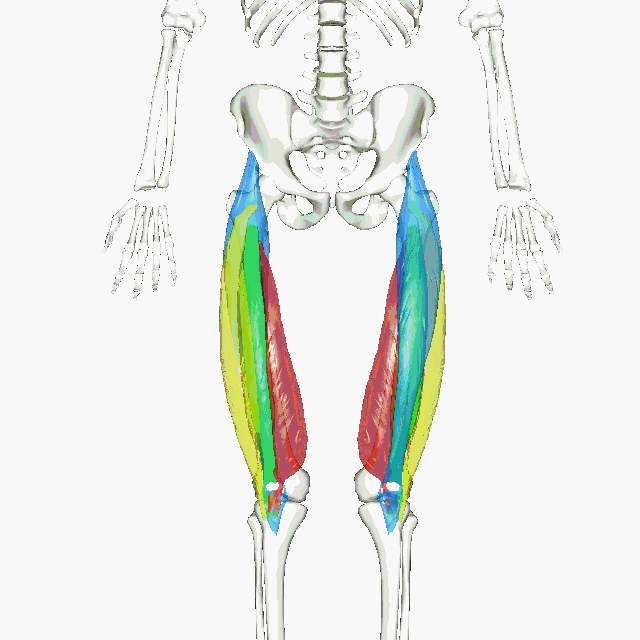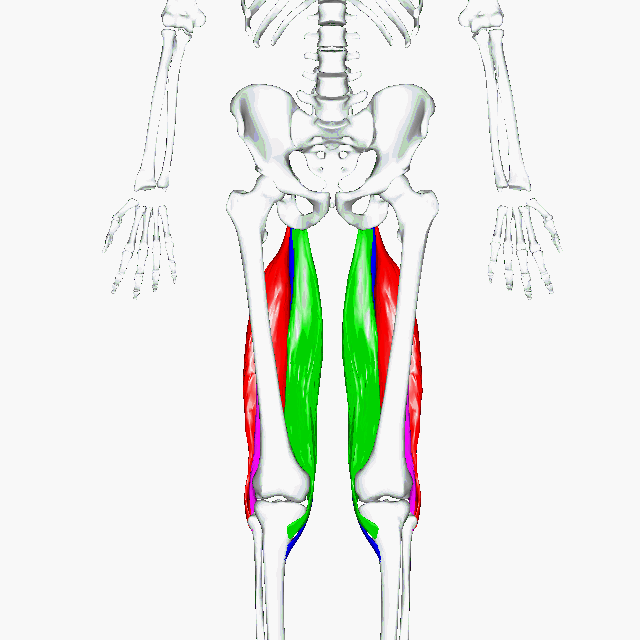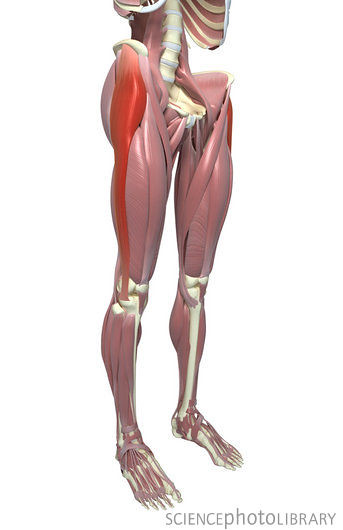Whether you’re a novice runner or a multi-marathon veteran, you’ve heard the importance of a post-run stretch, but do you know what to lengthen and what needs to stay strong? Pilates is a specialized regimen that properly stretches the muscles of the body with the strength and control necessary to help joints maintain a proper range of motion. Without specialized stretching and the opposing strength to hold the newly found range of motions, muscles can become tight and leave you susceptible to pain or injury.
So, what muscles need stretching? Any physical activity utilizes a whole range of different muscles, but targeting the ones that are being used the most during your runs will be most effective and help you improve in the long run.
1. The Quadriceps

Your Quadriceps, or “Quads” are comprised of four separate muscles on the front of your thigh. This area can be overused during running and may be one of the first areas you feel soreness in, especially in a marathon like Boston that starts off downhill! If not lengthened out properly, tight quads can cause a misalignment in the leg joints.
2. The Calves

Made up of two separate muscles on the back of your lower leg, the calves are an often overlooked, but essential piece of your running anatomy. If weakened or tightened, the calves can affect the movement at both the knee and the ankle joint.
3. The Hamstrings

You might not know exactly what or where your hamstrings are, but chances are you’ve felt them. The hamstring is a grouping of three muscles that run the length of the back of your upper leg. Although the hamstring is important for knee and hip movements, runners often forget or neglect to stretch them out. The hamstrings are important hip mobilizers and they also help to stabilize the pelvis. Maintaining the right flexibility for a runner can help with muscle fatigue, overuse, and even lower back pain!
4. The Iliotibial (IT) Band

While the Iliotibial band is not a muscle it plays a vital role in your body’s mechanics for running. The IT Band is a fascial band that spans the outer knee and thigh. It is part of a system that contributes to hip movement and knee stabilization and is used constantly during a run. The IT band is meant to be tight in order to control the position of the leg, yet becomes overly tight and overused when the glutes and inner thighs are weak.
5. The Gluteal Muscles

Did you know that your Gluteus Maximus (aka your backside) is the largest and heaviest muscle in your body? It is also one of the laziest! Your glutes are made up of three main muscles and several smaller ones that make many of your lower body movements possible. Sitting all day and general inactivity leads to these muscles becoming underutilized and weak, so it’s important to give them the attention they deserve. On the flip side, overuse of the Gluteal muscles can affect hip flexibility and overall pelvic stability.
Now that we’ve covered the basics of which muscles need stretching, you still need to know HOW to stretch them! Endurance is excited to announce two FREE upcoming seminars for runners of all skill levels:
Runners Relax and Renew
Tuesday, April 16th at 10 AM:
For our friends running the Boston Marathon, we are hosting a 45-minute post-run stretch and meditation session to help rejuvenate the muscles and embrace your amazing accomplishment!
Sign up HERE.
Saturday, April 20th at 1 PM:
Inspired by your friends running the marathon? If you’re interested in running next year or just looking to jump head first into the sport, join us for an Intro to Running class where we’ll cover injury prevention, scheduling, nutrition, and cross-training. Learn how to run with the Endurance Method, the safest way to run with your butt and gut!
Sign up HERE.








